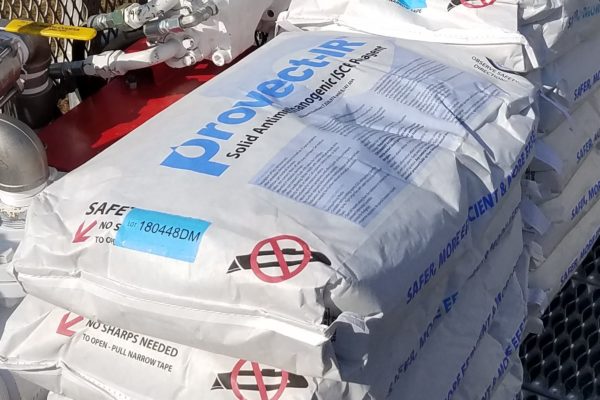ISCO AND/OR ISCR – HOW TO DECIDE IN 2017?
This presentation is an update of the paper by Mueller and Brown (2008). The objectives are to: i) review general and advanced examples of in situ chemical oxidation (ISCO), in situ chemical reduction (ISCR), and related technologies, then ii) summarize initial screening criteria and guidelines to consider when selecting between an ISCO and/or ISCR approach, including a review of geochemical parameters impacting the dosing requirements and potential factors inhibiting performance.
Many organic constituents of interest (COIs) can be degraded via oxidative and/or reductive processes. And in some cases, inorganic COIs such as nitrogenous compounds and heavy metals are also present as co-contaminants in soil, sediment and groundwater environments. Accordingly, various oxidizing and reducing agents have been developed to remediate impacted environments. Each of these reagents offers seemingly unique features in terms of safety, ease of use, longevity, dosing requirements, and remedial efficacy on a varying range of COIs. Several examples of these technologies will be compared to Provect-OX® (a unique persulfate-based ISCO technology), and Provect-ERD CH4™, Provect-IR®, Provect-IRM®, AquaGate®-CH4™ and EZVI-CH4® technologies which uniquely contain antimethanogenic reagents (AMRs) to control excessive methanogenesis during remedial actions. There are also situations when the different technologies can be successfully combined, for example by applying ISCO in the source area coupled with an ISCR permeable reactive barrier for plume control.
Important factors to consider when selecting a remedial approach include: i) the type of application (source removal, plume control or both), ii) presence of free product (e.g., NAPL), iii) desired clean-up time, iv) longevity of the material in the subsurface / reaction kinetics, v) secondary environmental impacts including break-down products, methane, H2S, the addition of sulfate, the potential for liberating heavy metals, and vi) overall health and safety issues (the importance of COI destruction vs. physical sequestration as a remedial action). The composition of the COI profile also needs to be considered. ISCR is active towards a wide range of halogenated compounds, but are not very effective for petroleum based hydrocarbons such as BTEX. The ISCO technologies reactivity toward different COIs are diverse and heavily dependent upon activators and application technique.
In general, if the targeted environment is hypoxic (oxygen limited), it seems intuitive to employ an ISCR strategy. Conversely, an ISCO strategy would likely be more effective in an oxic environment. Chemical oxidants will oxidize natural organics and reduced inorganics, and the ISCO loading requirements will therefore be higher for soils high in organic content. Particularly for soils with lower COI concentrations, ISCO may become cost prohibitive if the CHC oxidant demand makes up a smaller fraction of the total oxidant demand of the soil. On the other hand, the presence of competing electron acceptors such as oxygen, nitrate, iron(III), manganese and sulfate will increase the loading requirements for ISCR.
Reference:
Mueller, J. and R. Brown. 2008. Oxidation or Reduction – How to Decide? Pollution Engineering News, April 2008, pages 51-54.
Contacts:
Jim Mueller – Provectus Environmental Products, Inc. | Email: [email protected]
Dick Brown – ERM | Email: [email protected]

